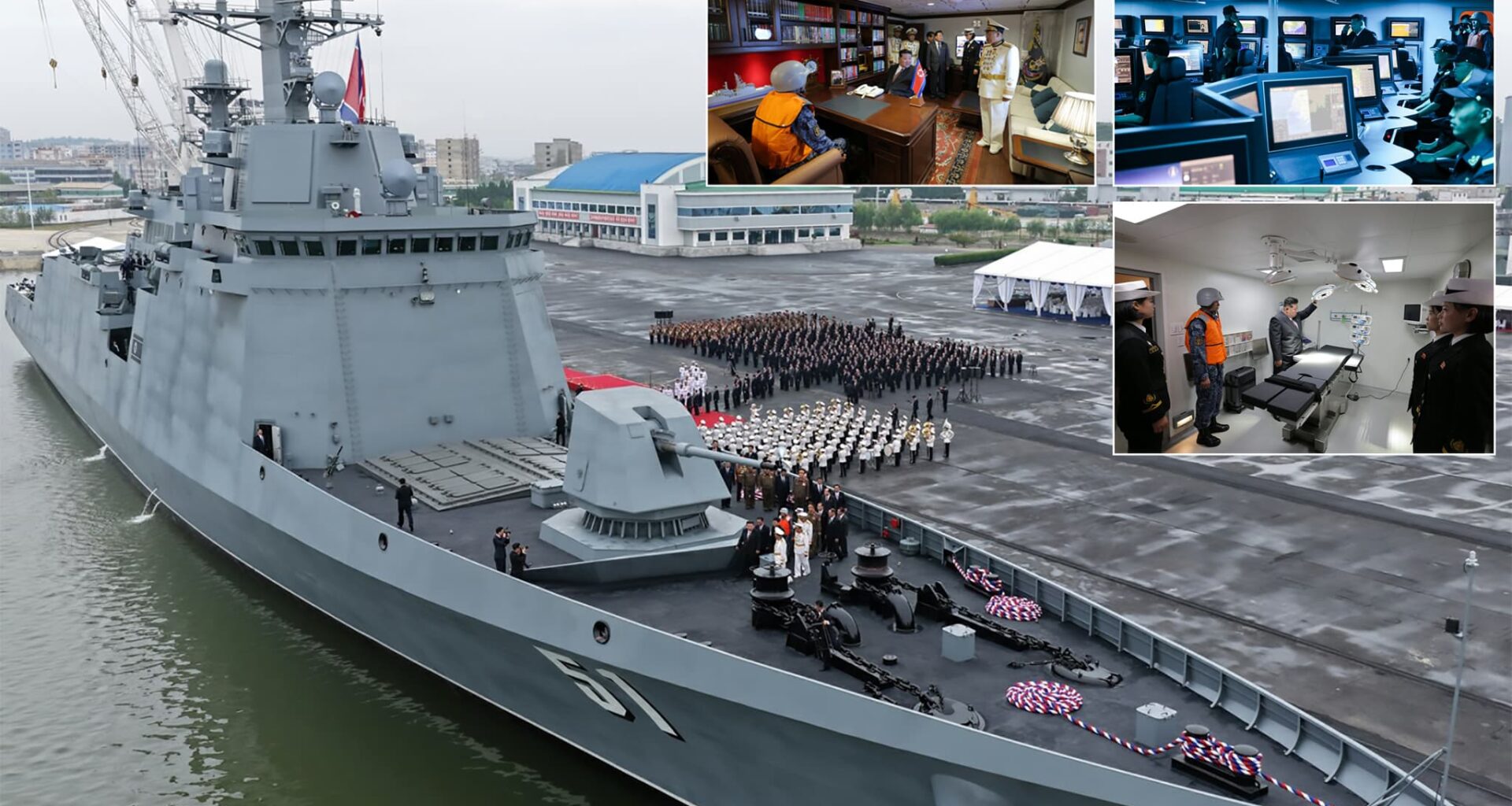Only months after its commissioning on April 25, 2025, North Korea’s most advanced surface warship, the missile destroyer Choe Hyon (51), has reappeared featuring significant modifications to its weapon and sensor suites.
North Korea showcased its newest and most advanced warship, the 142-meter missile destroyer Choe Hyon, during the opening ceremony of the annual “Defense Development 2025” exhibition, held for the third consecutive year, on October 5, 2025 in Pyongyang to mark the 80th anniversary of the founding of the Workers’ Party of Korea. The event was an opportunity for North Korea to present adjustments and refinements made to the destroyer over six months of post-launch work since her official commissioning in April 25, 2025. The display precedes the destroyer’s planned redeployment to the east coast early next year.
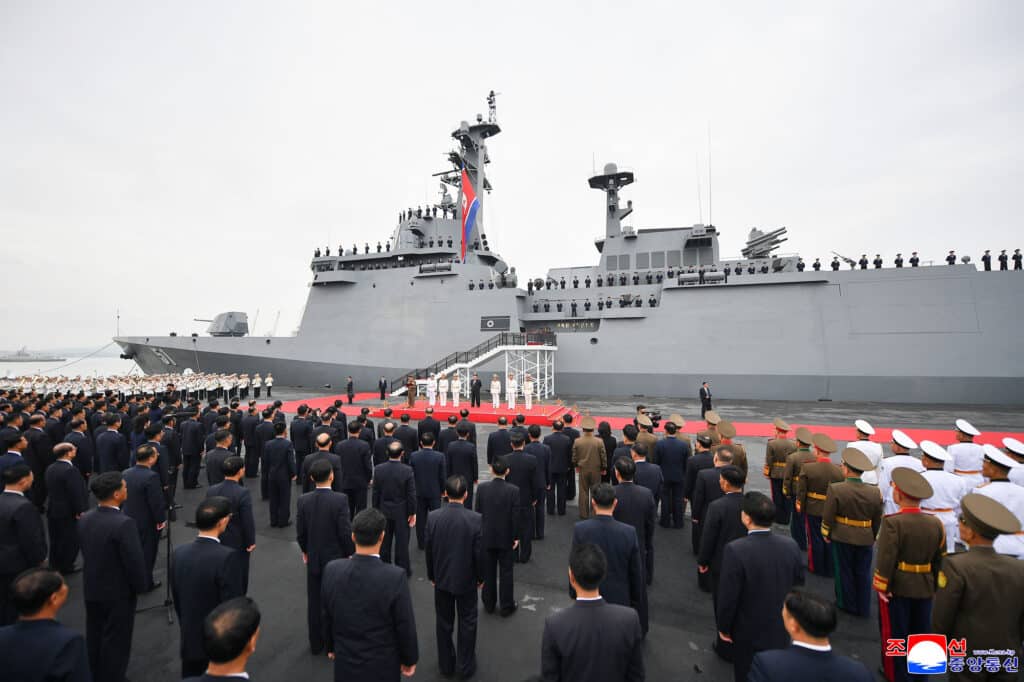
North Korean leader Kim Jong Un addresses officials of the Democratic People’s Republic of Korea (DPRK) and KPA officers and sailors while standing in front of the latest and most advanced surface combatant in the KPA Navy, the Choe Hyon heavily armed missile destroyer, on October 5, 2025. Image: DPRK media.
North Korean leader Kim Jong Un, accompanied by senior military and party officials as well as naval personnel, toured the ship at Nampho Port. The destroyer was also visited by other participants of the exhibition’s opening ceremony, and a reception was later held aboard by the Party’s Central Military Commission in honor of the Navy of the Korean People’s Army (KPA) officers and sailors.
Several modifications were noted aboard the new destroyer of the KPA Navy, most notably in its weapons fit and electronic suite. Moreover, for the first time, and rare for a North Korean naval vessel, official images also revealed parts of the ship’s (surprisingly very modern) interior, including the combat information center (CIC), bridge, crew accommodations, and other sections. The photos reveal an advanced configuration, featuring multi-function consoles, large touchscreens, and a comfortable, thoughtfully designed interior, a genuine surprise for observers.
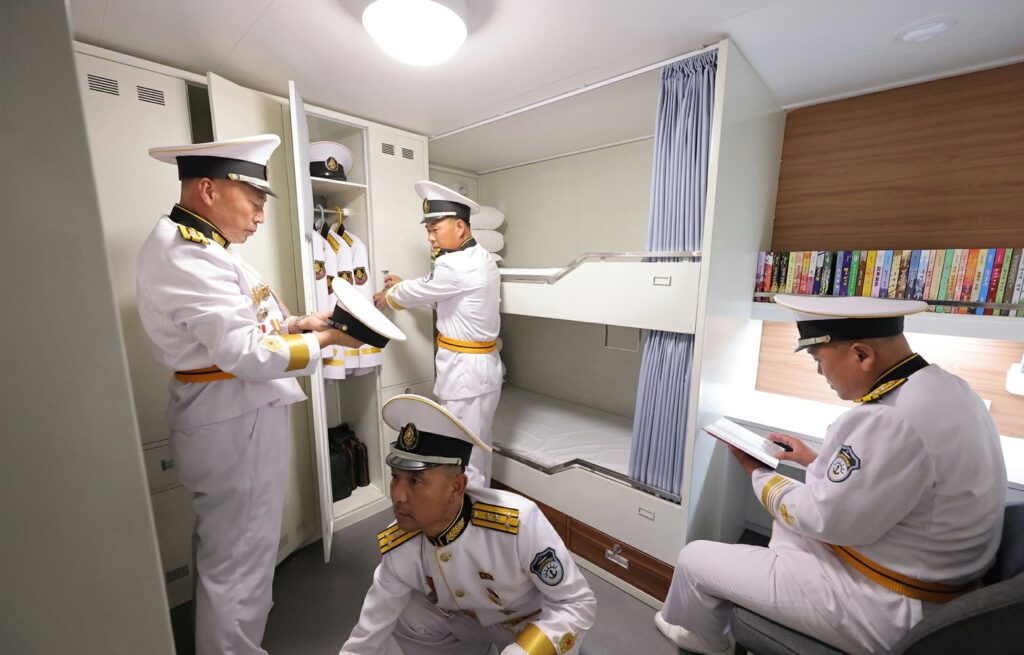
Accomodation areas of Choe Hyon.
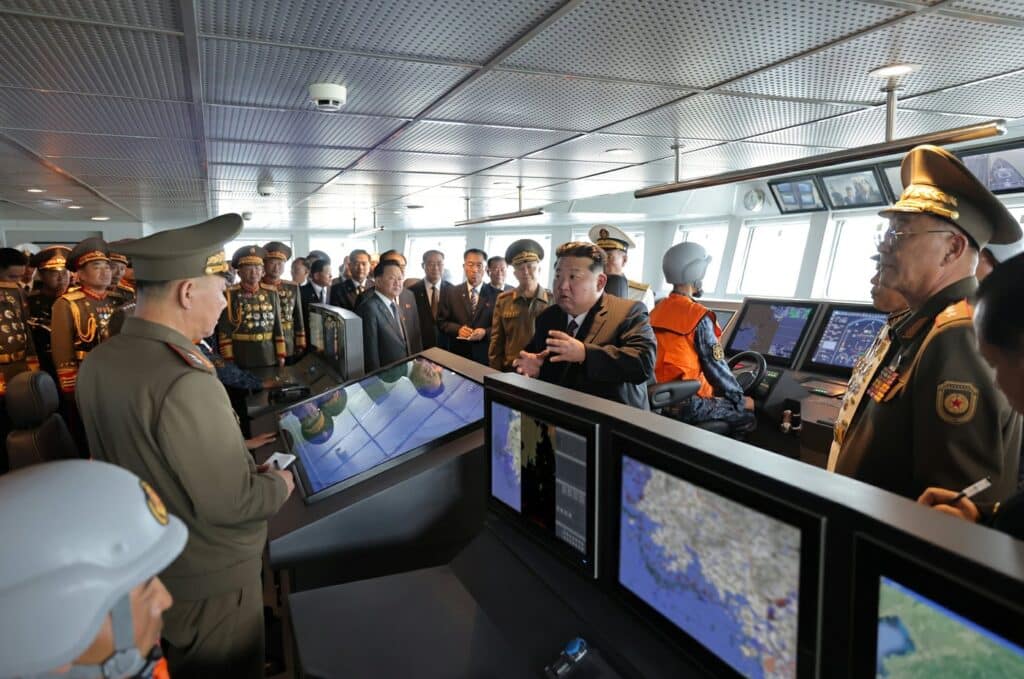
The advanced bridge of Choe Hyon.
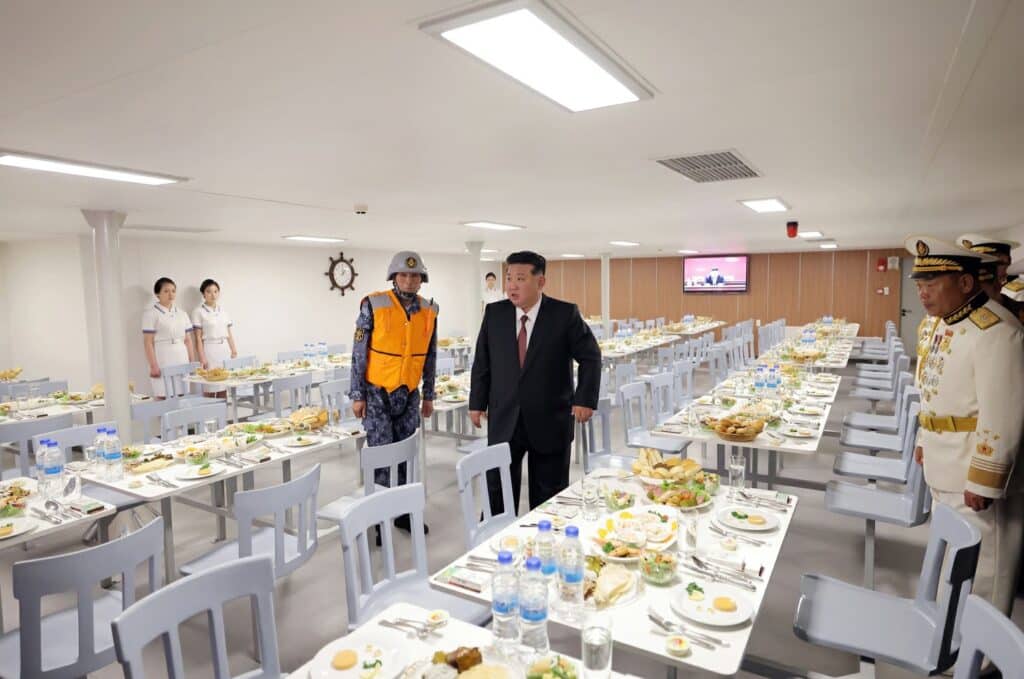
Spacious mess hall in Choe Hyon destroyer.
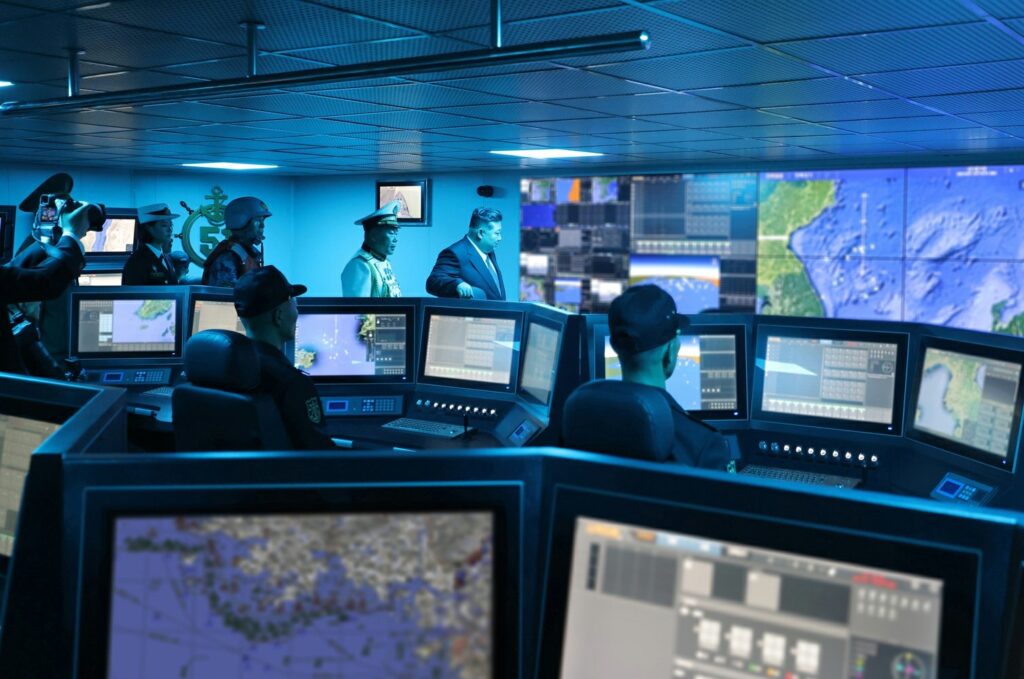
The quite impressive CIC of Choe Hyon as it appeared in October 2025. Image DPRK media.
In terms of weapon systems, the vessel’s two AK-630–style CIWS, featuring cupolas reminiscent of the earlier AK-230 mounts, have been replaced with installations resembling the PLAN Type 730 CIWS. Notably, the North Korean configuration employs a six-barrel gatling arrangement, in contrast to the seven-barrel configuration of its Chinese counterpart on which the design appears to be based.
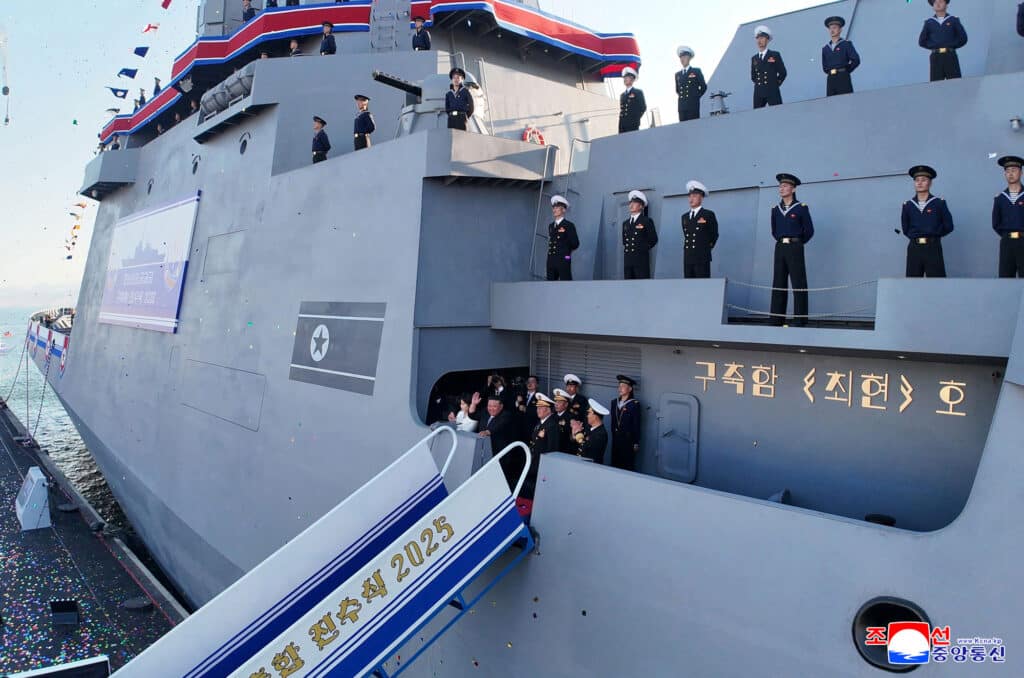
This April photo shows an amidships “AK630-style” CIWS.
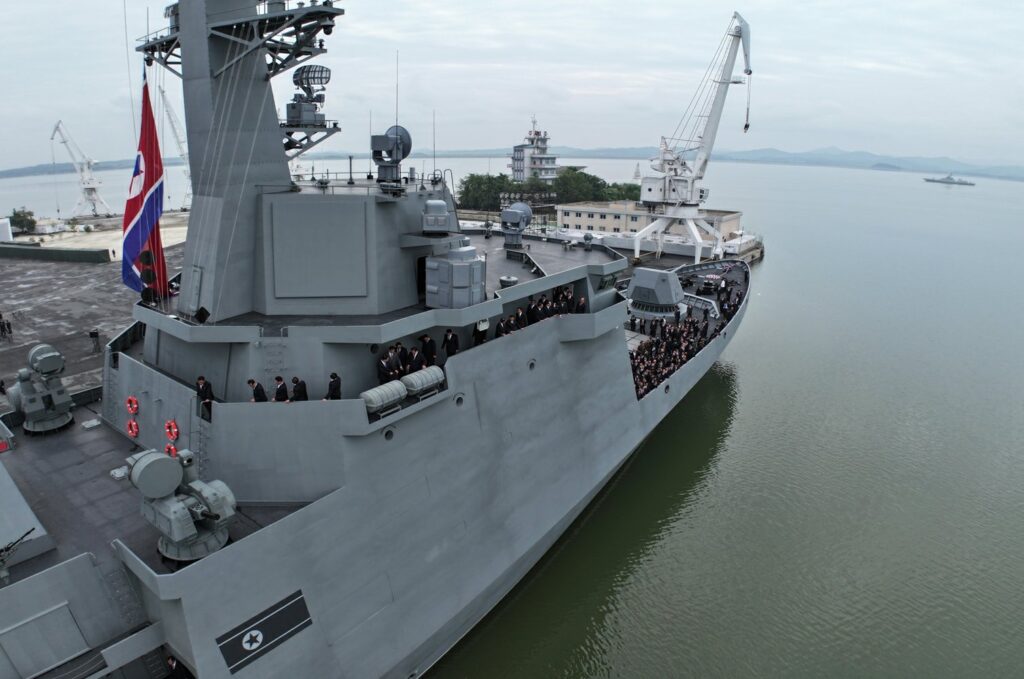
This October photo shows an amidships “Type 730-style” CIWS.
Notable modifications are evident in the ship’s vertical launch system (VLS) configuration. The forward VLS, which previously featured 32 small-diameter launch cells, now consists of 12 larger cells identical to those fitted in the aft section of the same launcher, bringing the total to 24. The aft VLS has also been reworked: the superstructure that once housed 10 oversized ballistic missile cells has been redesigned and integrated with the adjacent hull structure, creating a more continuous profile and eliminating the port and starboard gaps seen in the earlier configuration. The large cells have been replaced by a launcher similar to the forward one, and it is likely an exact bow VLS configuration containing 24 cells. As a result, the initial count of 74 cells has been reduced to 68 and possibly the rear UAV (?) storage rooms have been removed.
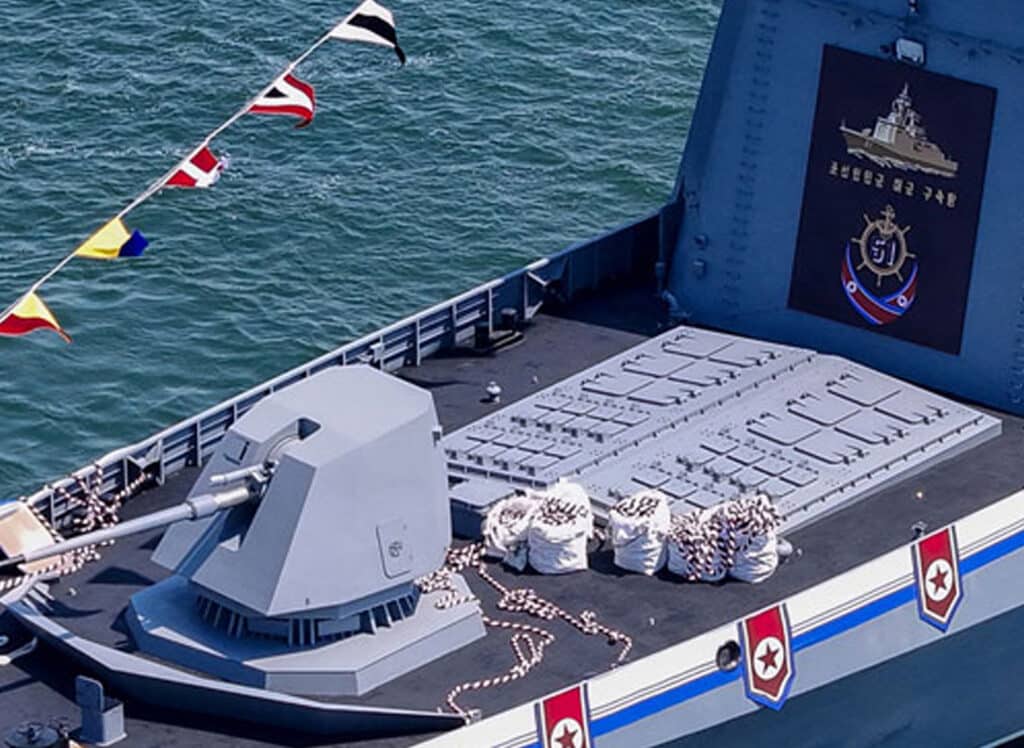
An April photo shows the destroyer fitted with a VLS, of which the forward section has 32 small cells.
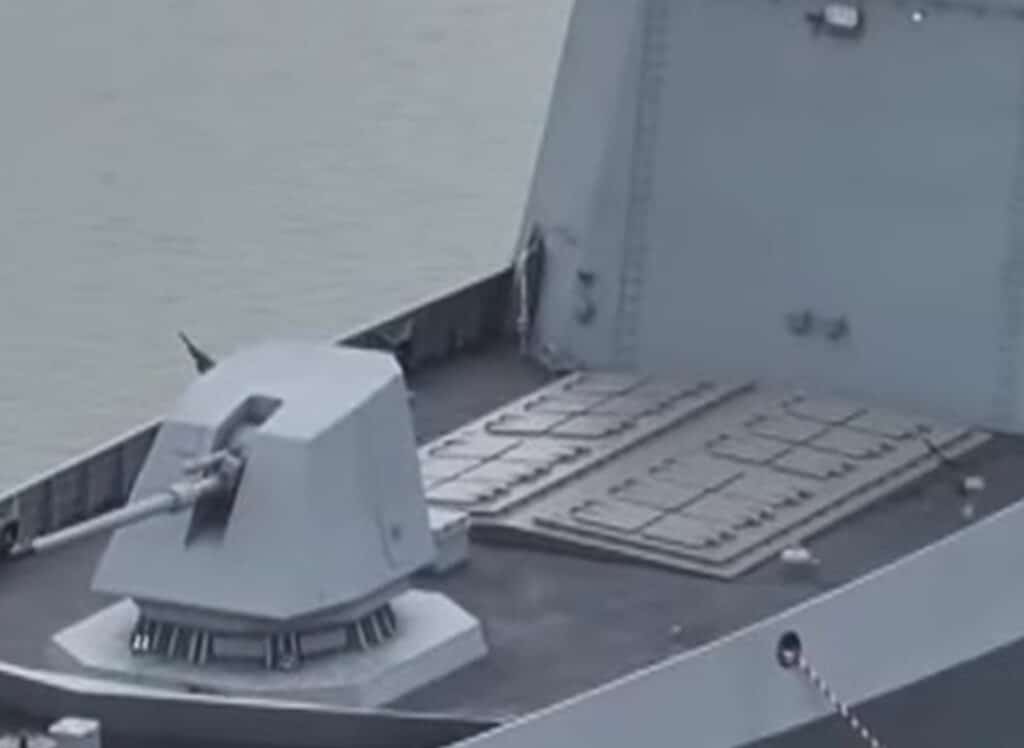
A photo taken in October depicts the destroyer equipped with a VLS with 24 large cells.
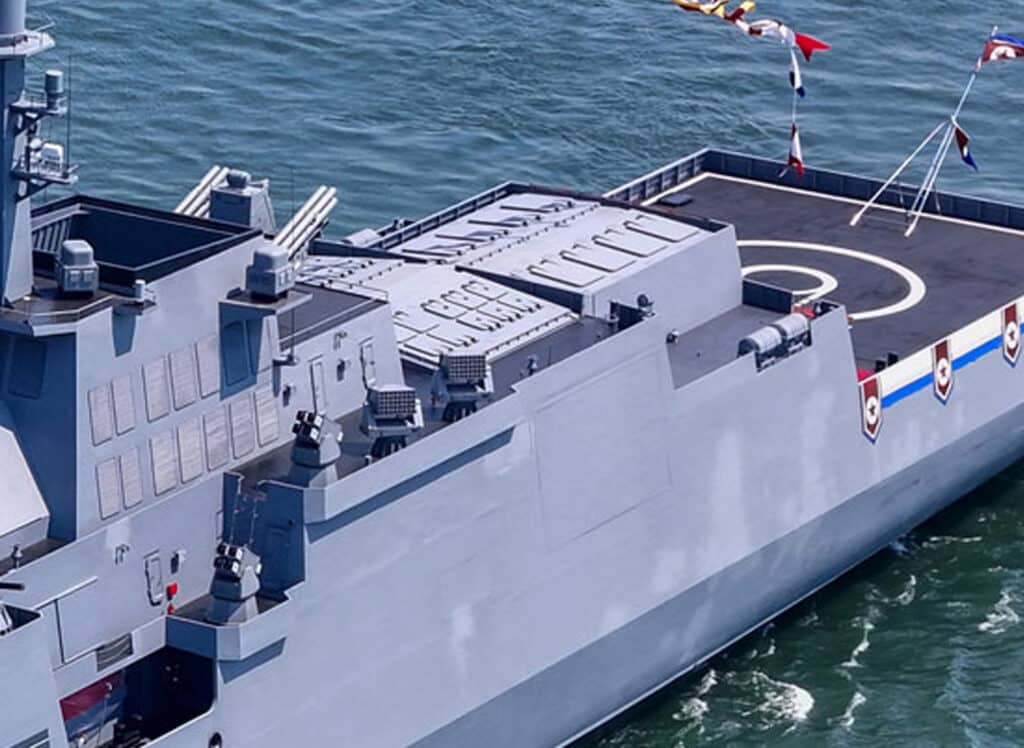
A photo taken in April shows the destroyer fitted with two ATGM launchers on each side, two DLS and one “AK630” CIWS, while the rear section of the VLS appears with ten oversized cells.
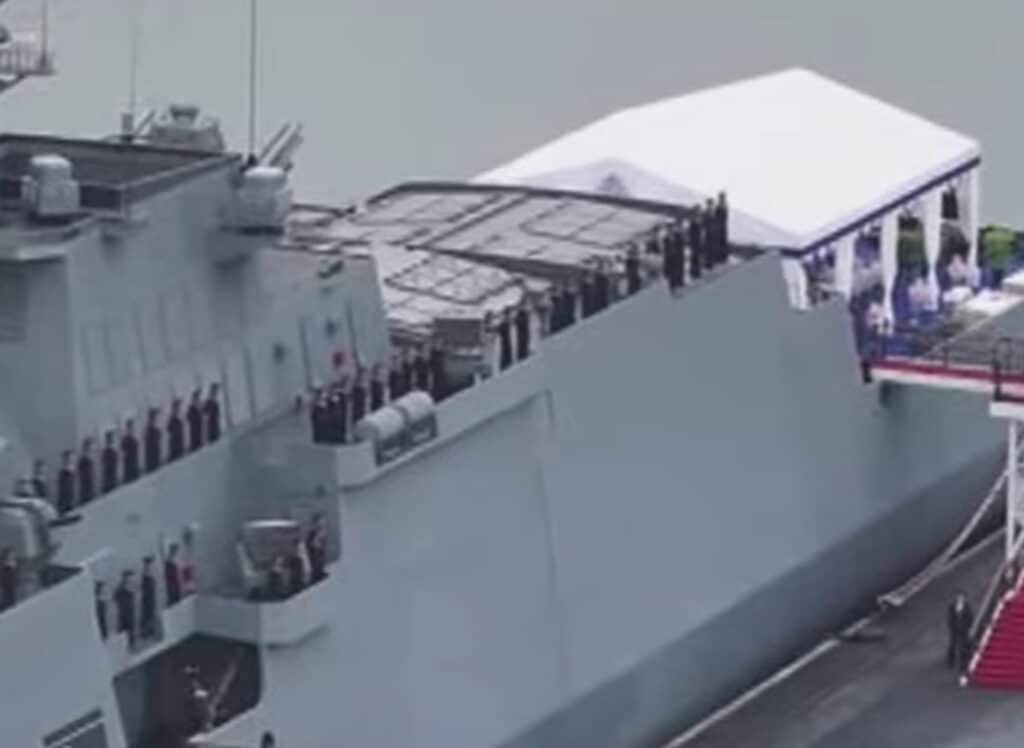
In an October photo, the destroyer is seen with two ATGM launchers per side, two DLSs, and a “Type 730” CIWS, while the aft VLS section features cells resembling those of the forward unit.
Furthermore, the four ATGM launchers were removed. The second decoy-launching system on each side has been relocated to the lower-deck ATGM-launcher position, and life-saving equipment was placed where the DLSs used to be. At least eight KPVT 14.5mm KPVT heavy machine guns have been installed on pedestals; four amidships, two at the bow section and two near the aft VLS.
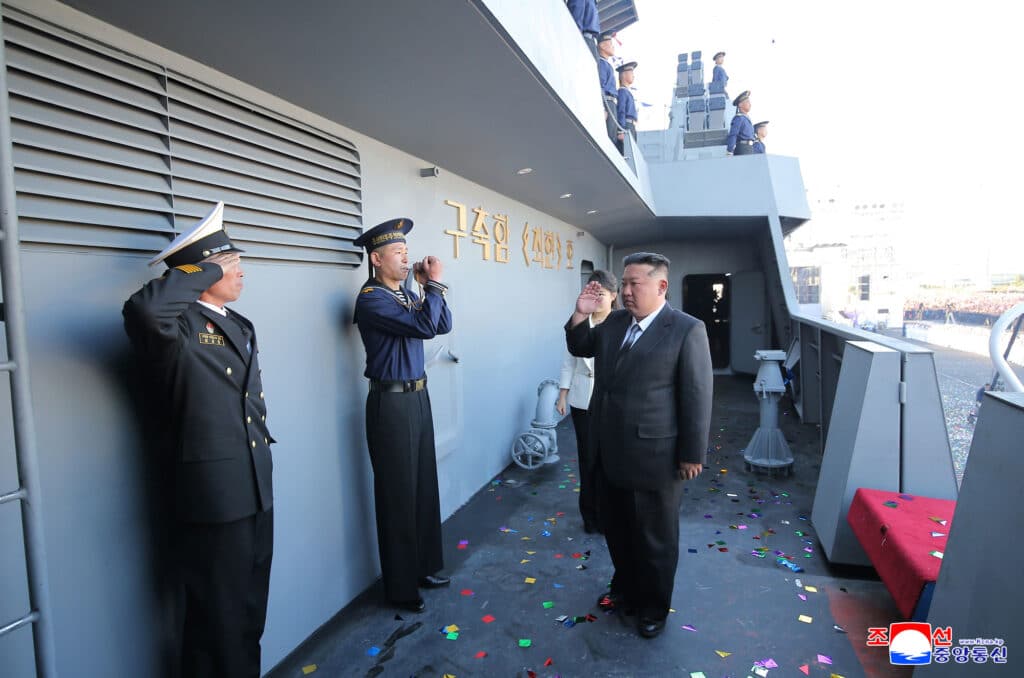
In the April photograph, the destroyer carried two ATGM launchers per side and two DLSs.
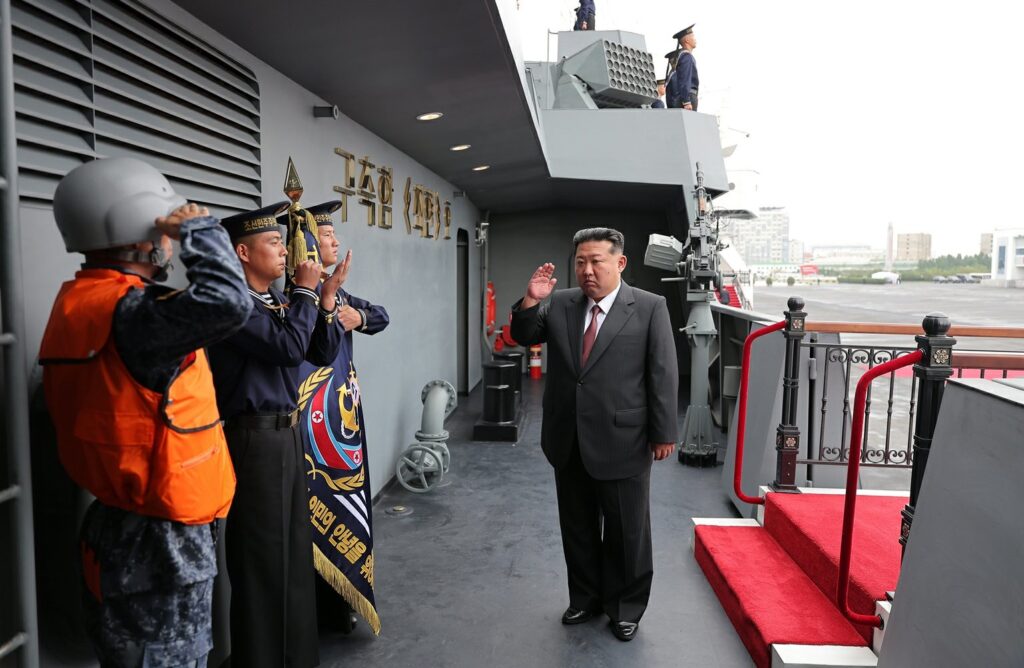
In the Otcober photograph, the destroyer carries only two DLSs per side plus two 14.5mm HMGs amidships, while the ATGM launchers have been removed.
Changes are also apparent in the ship’s sensor suite, particularly in its fire-control radars (FCRs). The two previously fitted square-shaped radars have been replaced by circular units resembling the Chinese Type 347 FCR. Modifications are also evident in the EW systems, with two sensors relocated from atop the superstructure, which houses the four fixed radar arrays and the secondary FCR, to positions along the sides of that structure.
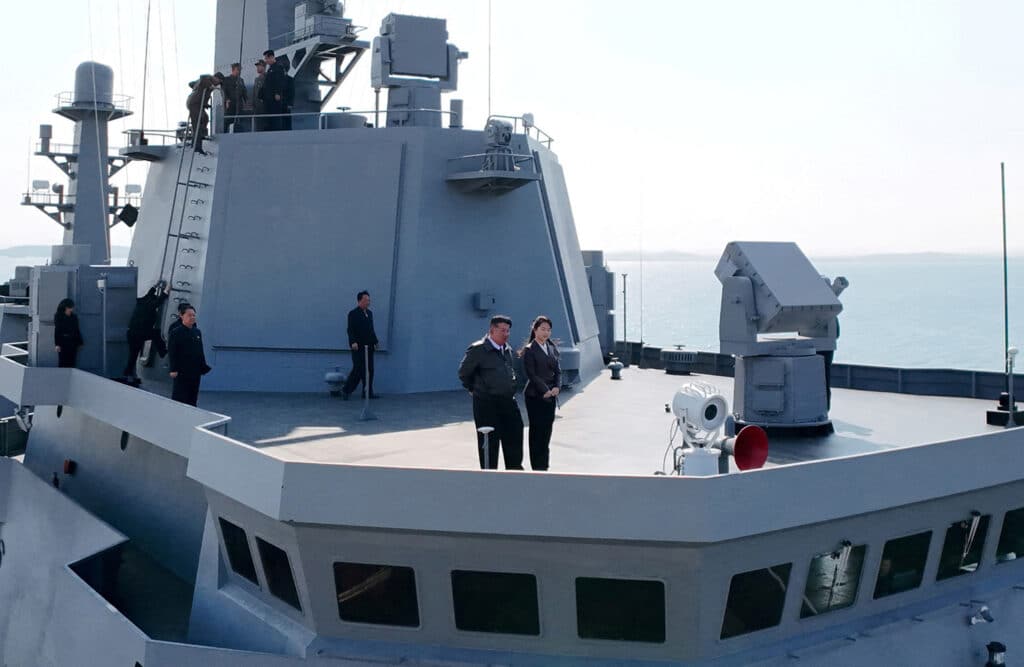
In this photo taken in April, the destroyer is shown with two square-shaped FCRs and part of the EW system mounted atop the structure housing the fixed radar arrays.
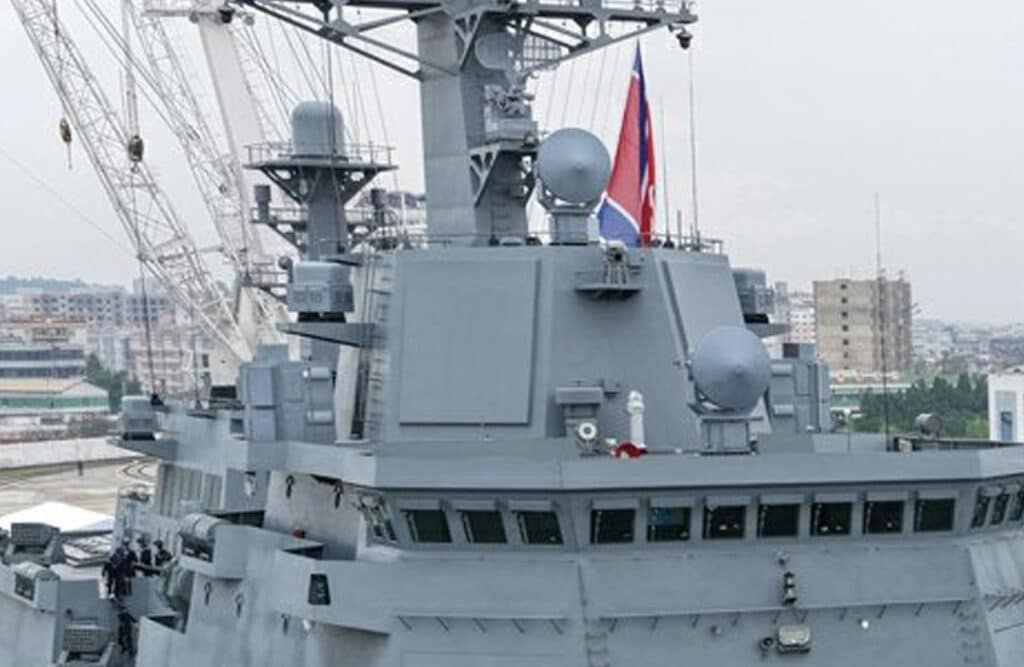
In this photo taken in October, the destroyer is shown with two circular FCRs and components of its EW system mounted between the fixed radar arrays on each side of the ship.
The fact that all weapons and related sensor systems of the destroyer were tested off Nampo on April 28–29 makes their replacement only a few months later even more curious from an operational standpoint. Furthermore, it raises questions about whether the ship’s armament, particularly the VLS, is designed for modular replacement, or if the earlier setup was tested and subsequently replaced with a more advanced version. Did the ship reduce its SAM loadout to accommodate more anti-ship or cruise missiles, or were the short-range SAMs swapped for larger variants? Curiously, the model in the commander’s cabin still portrays the ship as it appeared in April. For a detailed analysis of the equipment of the powerful 5,000-ton Choe Hyon-class destroyers, of which three more units are under construction, see the article “North Korea Commissions Heavily Armed Missile Destroyer ‘Choe Hyon’.”
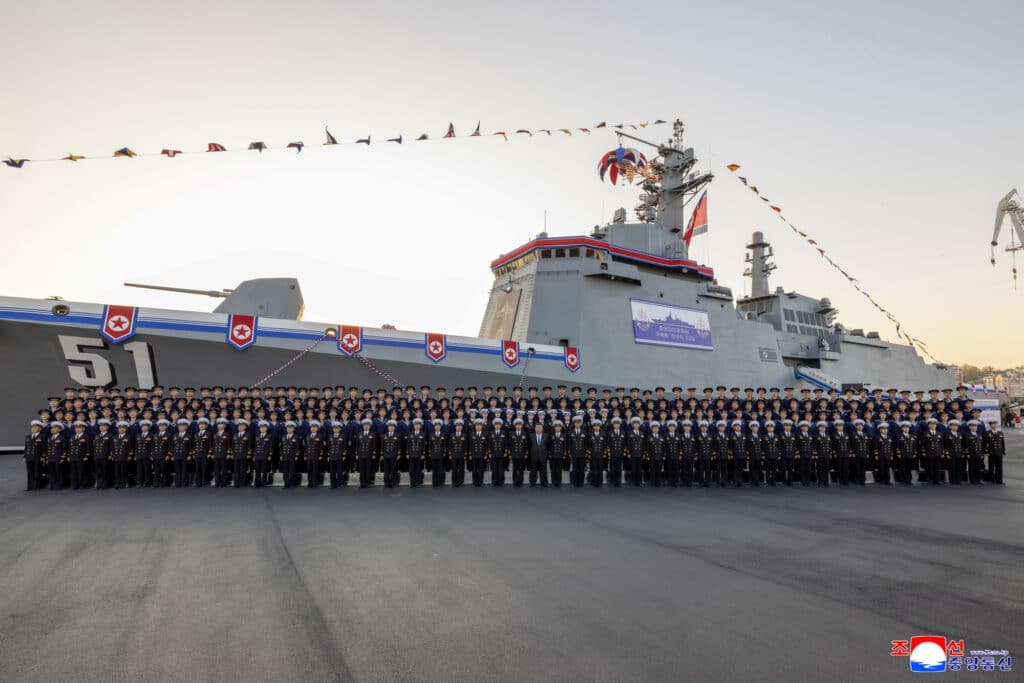
A profile photograph of the Choe Hyon-class destroyer taken in April 2025. Image DPRK media.
